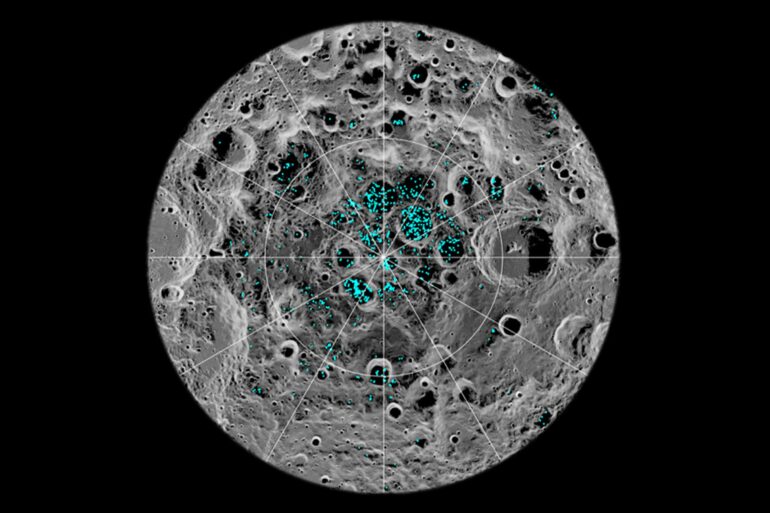
Curious Kids is a series for children of all ages. If you have a question you’d like an expert to answer, send it to [email protected].
I have a question about ice on the Moon. How is this possible? – Olaf, age 9, Hillsborough, North Carolina
We’re lucky to live on a water world. More than 70% of the Earth’s surface is covered in water.
Earth is about 94 million miles from the Sun. That’s within the Goldilocks zone: the place in our solar system where a planet has just the right temperature for water to exist in oceans and rivers as a liquid and as ice in the north and south poles.
Earth also has an atmosphere more than 6,000 miles (9,650 kilometers) thick that’s filled with oxygen for us to breathe. This atmosphere, along with a huge magnet in the center of the Earth, helps protect us from the Sun’s harmful radiation, mostly solar wind and cosmic rays.
But the Moon hardly looks like a water world, or even a place with a few puddles. It has a worn-out internal magnet and an atmosphere so weak it’s virtually a vacuum. There are no clouds or rain or snow, just a sky that’s only the blackness of space, with a surface baked by the Sun. The Moon’s temperature reaches 273 degrees Fahrenheit (134 Celsius) by day and goes as low as -243 F (-153 C) at night.
But as scientists who study space and work to develop technologies that look for the water, we can definitively say: Yes, the Moon has water.
One day, astronauts may be able to make Moon water drinkable.
The discovery
For a long time, astronomers and other scientists thought Moon water was unlikely. After all, the Apollo astronauts brought back many rock samples from the Moon, and all were dry, with no detectable water.
But visits by recent spacecraft showed that some water is there. In 2009, NASA smashed a spacecraft – the Lunar Crater Observation and Sensing Satellite, or LCROSS – into the Moon’s surface, inside Cabeus crater. When that happened, water ice was ejected.
This confirmed to scientists that water ice was in the bottom of the craters. But determining how much water is there will be difficult. The 10,000 or so Moon craters are essentially big holes, with areas so shaded the Sun never shines inside. These places are really cold, well under -300 F (-184 C). Once these frozen water molecules get stuck in the craters, they pretty much stay forever, unless some heat or energy dislodges them. They are unlikely to naturally evaporate or sublimate as vapor – it’s just too cold in there.
But that doesn’t mean water is stored only in craters. In 2023, scientists using SOFIA, the Stratospheric Observatory for Infrared Astronomy, looked for water on the Moon’s surface in areas that were not as cold as the craters. And they found it – not on top of the soil, but probably inside the soil grains.
No one knows yet…



